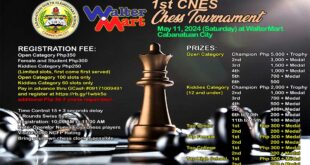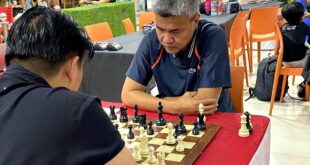In a less dramatic rendition of their turnaround last season, when they started 11-30 and finished the season ninth in the East, the Miami Heat are getting better as the season goes along. Winners of their first five games of 2018, they’re creating offense with a floor-spacing, playmaking lineup that can clamp down defensively, going toe-to-toe with most teams in terms of size and grit. With Goran Dragic, Josh Richardson, James Johnson, Bam Adebayo, and Kelly Olynyk, the current No. 4 seed’s most promising lineup features no All-Stars. But it’s packed to the brim with almost-stars.
The only problem? Their 24-17 record entering a matinee showdown with the Milwaukee Bucks on Sunday belies an unimpressive -1.1 net rating, a metric that has historically been a reliable predictor of future success. Admittedly, the Heat were still figuring things out earlier in the season which could be, in part, the cause of their poor advanced stats.
“We’re a very versatile team, and we didn’t exactly know how to play together at first,” explained Richardson prior to their victory against Toronto on Tuesday. “We had a couple kinks to work out. We started getting guys like Kelly Olynyk out on the perimeter, get them screening, handing off. Bam showing how much much he can do. That definitely changed a lot of things for us.”
Once again @Bam1of1 had it going last night!
finished with 15 points off the bench to go along with 5 assists in the win over Indiana pic.twitter.com/jkuXuJiKJV
— Miami HEATTTTTT (@MiamiHEAT) January 11, 2018
The Heat’s past six games entering Sunday were decided by a margin of eight points or less, which leads, in the age of analytics, to considerations about the randomness and sustainability of their run. For all the hooting and hollering about the importance of executing down the stretch of a close game, there is a great deal of evidence of suggest that crunch-time results are largely random. Teams that are blisteringly hot in the final five minutes of a close game over a certain stretch of the season are often prone to come down, and vice versa. The Thunder, for example, induced panic in November with a slew of close losses.
This season, Heat have the second-best clutch rating in the NBA at 26.2, which suggests regression isn’t far behind. Accepting this wouldn’t be such a conundrum, if not for the fact that there seems, almost always, to be a degree of justice behind seat-of-their-pants wins. I don’t know if I believe this because intuitively, it makes sense, or because it reinforces my foundational notions about the magic of sports.
Maybe a great deal of the volatility behind crunch-time stats has to do with the fact that there simply isn’t a large sample size of plays with teams within five points in the last five minutes of a game. Select teams have consistently performed better than average (like the Spurs) or worse (like the Timberwolves) in crunch time over the years, which leads me to believe that while over a season, clutch play is random, there is a method to the madness.
And a medley of individual skill, improvisation, and head coach Erik Spoelstra’s playbook is a historically reliable method. The Heat, especially now that Dion Waiters will be out for the season, don’t have a go-to closer, but they have a slew of formidable scorers who can be deadly in the right position.
Consider the fact that in back-to-back last-second victories against the Raptors and the Jazz, the Heat executed the exact the same set and came out with a victory.
First, Wayne Ellington screened on the weak-side for Richardson to cut to the rim for a layup. Presumably, even the Phoenix Suns could suss this action out. What it did, though, was create an easier second option after the angle for Ellington to catch an open three-pointer was cut off, and Joe Ingles followed him.
“There’s really no primary target for something like that,” says Richardson. “When Wayne comes off, he’s the look. If he’s not open, then I was the look. You don’t know where the ball is going, so anybody can hurt you.”
That’s not entirely true. There are always hierarchies, whether they’re based on the best player taking the best shot, or in this case, role players taking their best shot. When pressed, Richardson admits, “I was probably the second look.”
Dragic corroborates, “It was Wayne, cutting to the corner. If he was open, I would hit him. The second option was J-Rich, backdoor to the hoop, and then the pindown back.”
Donovan Mitchell, Richardson’s man, even paused to consider Ellington, which gave Richardson even more time to cut to the top.
Just as every good isolation scorer has a counter-move when their go-to shot is denied, the Heat create multiple possibilities to put the ball in the basket. With Mitchell trailing, both because of Ellington and because he focused on staying between Richardson and the rim on his initial cut, he is waylaid by Olynyk’s screen, which left Richardson with the ball in his hands on an island against Derrick Favors, who was too slow-footed to stop his attack to the rim.
Against the Raptors, it was Ellington who threw the final punch, this time as the unlikely final option.
“We knew what play it was,” said Raptors coach Dwane Casey. “We knew exactly. We took the first option out. The first option that was Josh Richardson coming off the top, we did a good job of switching that one. DeMar did a good job of bodying him, switching it.”
After Norman Powell and DeMar DeRozan switched the initial screen, DeRozan and OG Anunoby switched on Olynyk’s attempt to give Ellington a running start to the rim. Powell fought over Olynyk’s screen for Richardson to curl to the top, even though DeRozan was already there, which forced Pascal Siakam to drop back to protect against Olynyk catching the ball at the rim, opening Ellington up in the corner. Dragic inbounded him the ball, and Siakam closed out well.
And then, Ellington did something nobody expected. A shooter who was assisted on 89.7 percent of his made shots put the ball on the floor and dropped in a game-winning layup.
The victory against the Raptors was, in some ways, a happy accident. But that’s what the best play calls do: they force the defense in so many uncomfortable directions that a mistake is invariably made, allowing the offense opportunities that generally lead to a higher rate of conversion. Crunch-time success is always going to be associated with some measure of luck. But the odds are more likely to be in your favor when you’re taking more open shots and layups. Offensive success, over the first 43 minutes of the game, is a matter of talent, execution, and unpredictability. There’s no reason that shouldn’t be the case in the game’s critical moments.
By Seerat Sohi
SOURCE: sbnation.com
 HATAW! D'yaryo ng Bayan hatawtabloid.com
HATAW! D'yaryo ng Bayan hatawtabloid.com





















